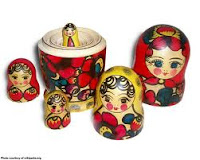Texts emerge
from other texts.
We have
already considered how we use mentor texts or model texts to help us think
about how to express our own ideas. (see
previous post—Mentor Texts: Learning to Writing from What We Read.)
We can borrow
ideas or topics to bring to our own writing as in my poem,What I Read First.
Or we can
borrow a complete structure, as in my poem, Thirteen Ways of Looking at Leaving School.
It may be one
line that inspires us. I have seen lots of writing prompts that encourage us to
start with one line --from either someone else’s or our own poem-- to create an
entirely new poem or other form.
Blackout
Poetry is unique way of creating poetry from existing text.
I was first introduced
to this addicting process by M.K. Asante when he visited our CAWP Summer Writing Institute in 2010.
Using a
newspaper or other existing text and a magic marker, you deliberately select individual words and eliminate others.
The remaining words emerge as a new and original text.
The remaining words emerge as a new and original text.
You destroy,
deconstruct and eliminate writing to construct, find, and create new writing.
Poet and
cartoonist, Austin Kleon discovered this process during a time of personal frustration with his failed attempts at writing short stories.
He describes his process in the preface to his book, Newspaper Blackout .
He
carved out a text –literally cutting out chunks of the pages of an existing
novel, The Street of Crocodiles by Bruno Schulz—to create his entirely new novel, Treeof Codes-- and created also a multi-layered,
complex reading experience.
Click
here to find out more about Jonathan Safran Foer and also view three
related videos---one recording people’s reaction upon first seeing the book, a second in which the author explains his intent and process, and a third that shows the
actual mechanical process of creating the books.
Black
out, carve up, cut up, deconstruct, destroy, eliminate.
Maintain,
retain, construct, find, create.
New
texts emerge.
Below
is my own black out poem, created from this blog post.
Texts emerge from other texts.
We have already considered how we can use mentor
texts or model texts to help us think about how to express our own ideas. (see previous post—Mentor Texts-)
We can
borrow ideas or topics to bring to our own
writing as in my poem, First Reader .
It
may be one line that inspires us. I have seen lots of writing
prompts that encourage us to start with one line from another poem (either someone else’s or our own)
as a first line for our writing to
create an entirely new poem or other form.
Blackout Poetry is unique way creating poetry from existing text.
I was first introduced to this addicting process by M.K. Asante when he visited our CAWP Summer Writing
Institute in 2010.
Using a newspaper or other existing text and a magic
marker, you deliberately select words individual words and eliminate others. The
remaining words emerge as a new and original text.
You
destroy, deconstruct and eliminate writing to construct, find, and create new writing.
Poet and cartoonist, Austin Kleon discovered this
process during a time of personal frustration with his failed attempts with writing short stories. He describes this process in the preface to
his book, Newspaper Blackout . More
information about the book and process can be found on this blog.—HERE
Kleon gives instructions for creating your own
blackout poetry in this video:
A similarly unique process is used by Jonathan Safran Foer to create the
novel, Tree of Codes
He
carved out a text –literally cutting out chunks of an existing novel, The
Street of Crocodiles—to create his entirely new novel,
Tree of Codes , and a multi-layered, complex reading experience.
Click here to find out more about
the Jonathan Safran Foer and also view three
related videos---one recording people’s reaction upon first seeing the book,
one in which the author explains his intent and process, and one that shows the
actual mechanical process of creating the books.
Black out, carve up, cut up, deconstruct,
destroy, eliminate.
Maintain,
retain, construct, find, create.
New
texts emerge.
Below is my own black out poem, created
from the blog post above.
Today's Deeper Writing Possibility
Select a section of the newspaper or another existing texts.
Using a magic marker, eliminate words, allowing a new text to emerge.
How did you decide which words to eliminate? Did you notice any patterns in the words selected? in your process?
How is the new text related to the original text?
Did you create something you want to share? Visit the companion site to the book, Newspaper Blackout and share your work: http://newspaperblackout.com/





























